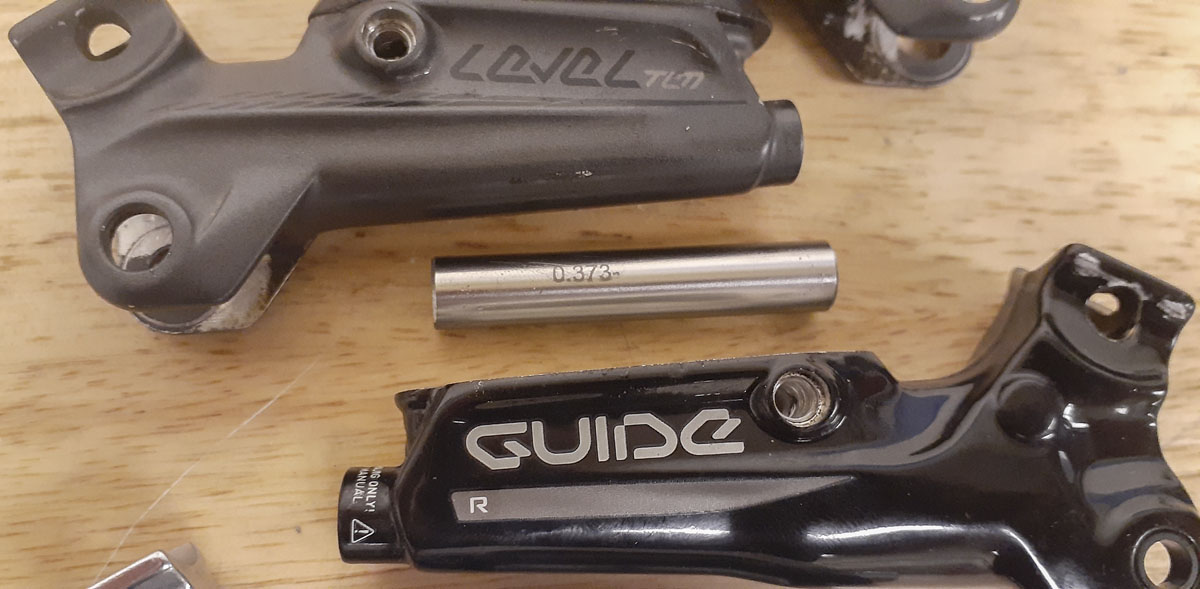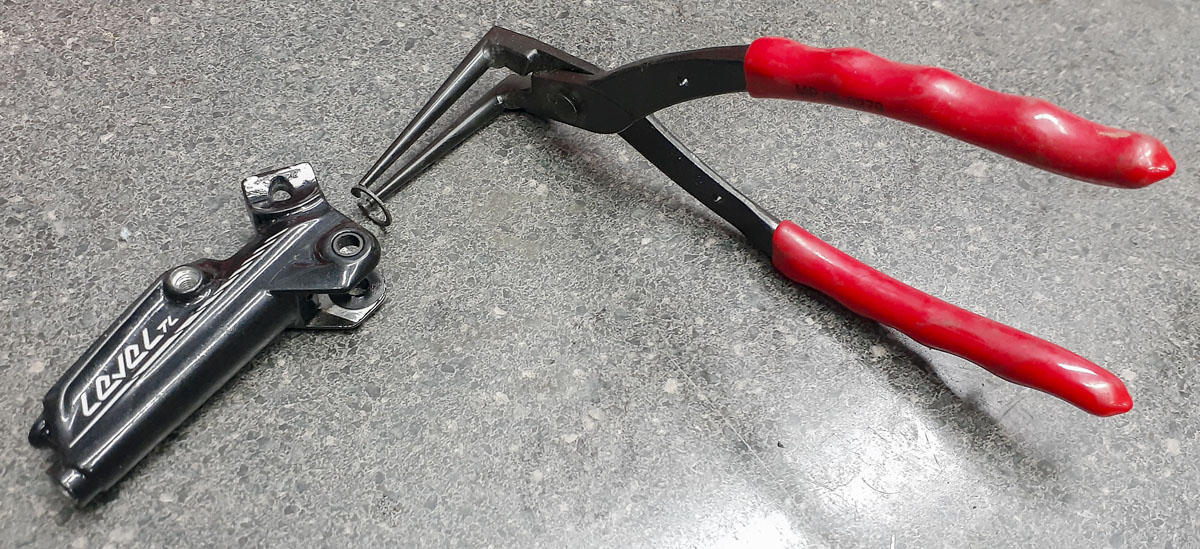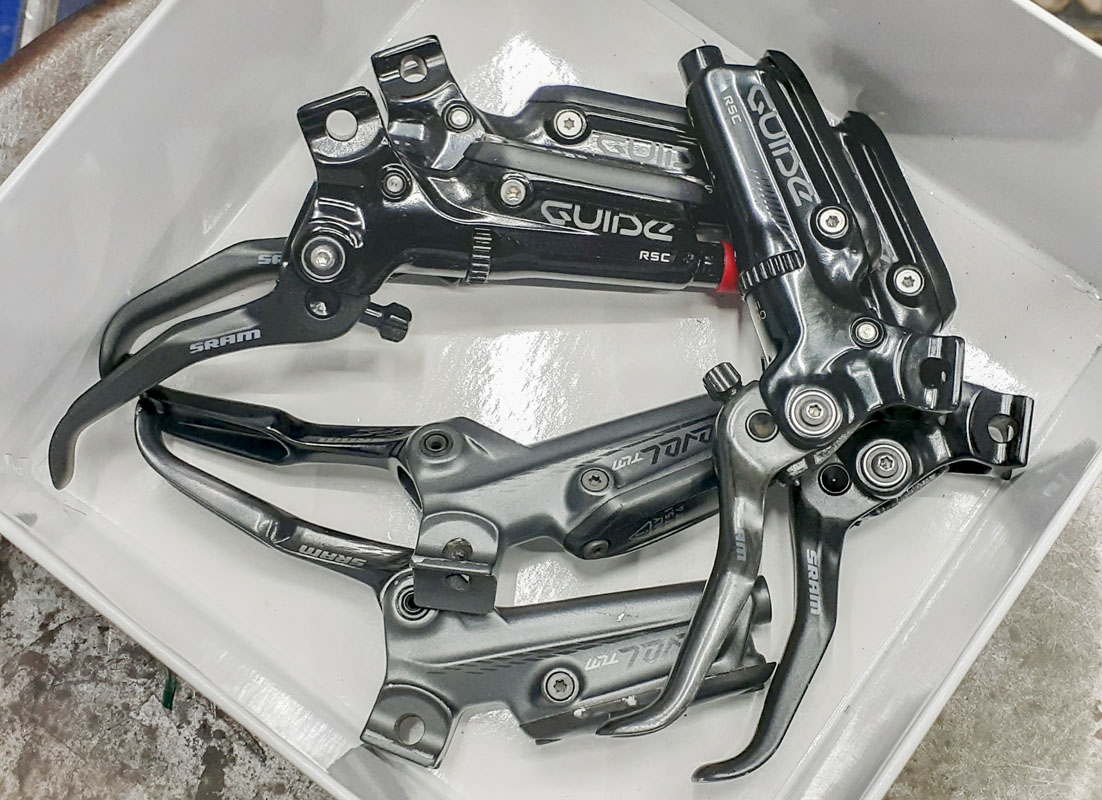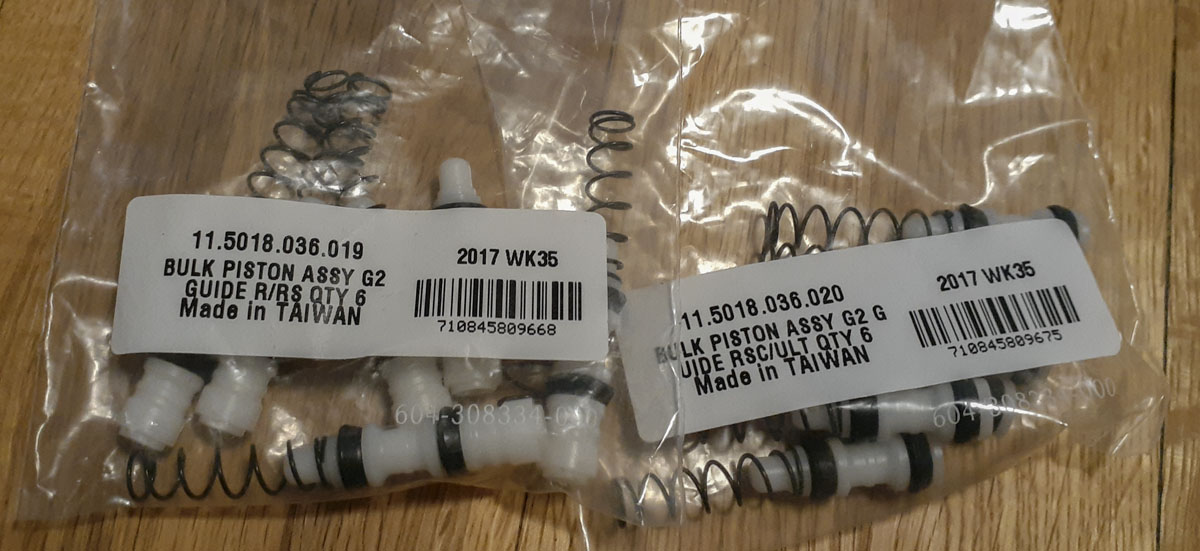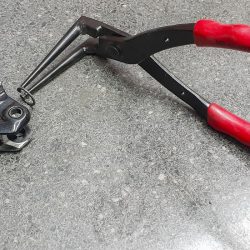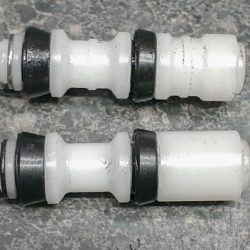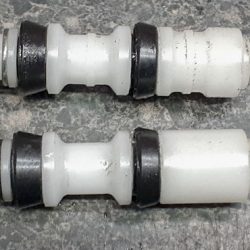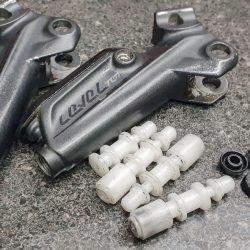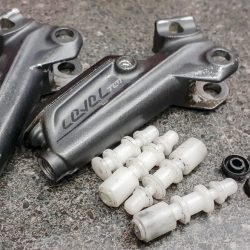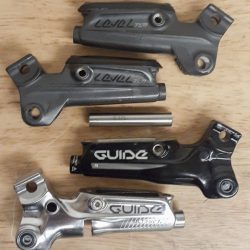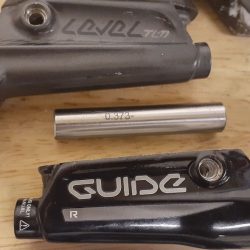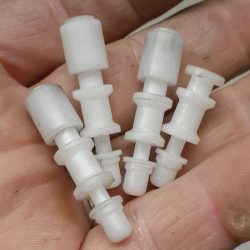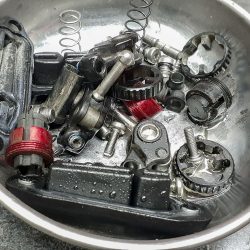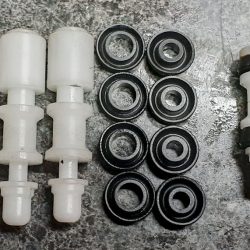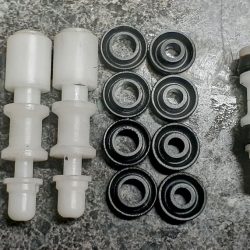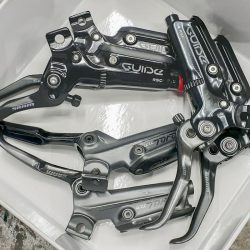SRAM Guide and Level brakes work pretty well. I use them. In general, they do what is needed. Not perfect, but nothing seems to be right now.
For flat bar all-road conversions that have flat mount calipers, we use the Level levers, not the Guide. This keeps the leverages correct. Level levers can also be used with Hope X2 and RX4 calipers. These have a lot of value for the tuner.
For those shopping a system or planning a build, any of the SRAM range that uses Matchmaker X mounting (MMX) of the master cylinder is worth using on your bike. They really aren’t worth wasting your effort with if the masters aren’t MMX. Non-MMX has several downstream consequences that aren’t good for systemization. Early decisions are important.
Recently, SRAM has had a problem with with the pistons interface in the bores of the master cylinders. A rider will pull the lever in to actuate the brakes and when release, the piston doesn’t spring back to the origin. There seems to be some swelling that happens over time, with or without heat. Finally suffering from this on some levers recently, I looked into it further.
SRAM has done a significant of work to educate/support riders and dealers on this issue; they’ve fixed it with the new generation of pistons and seals (which must be used together) and have extended the warranty period to 3 years.
The modifications that I perform here should definitely not be attempted by the casual observer or those unfamiliar with the engineering concepts at play.
In my sample of 4 units, the bores of the master cylinders seem to be cut to 0.373″ (9.47mm). They were extremely consistent. I’m guessing that this is engineered at 9.5mm and cut at MMC within some tolerance. In a shop, MMC is always in effect unless otherwise specified. I can speculate that the bore was specified 9.5mm with a plus/minus of 0.05mm, when cut at MMC, they went down to 9.48mm. The tolerance should probably have been minus ZERO and plus some amount. MMC is something younger engineers discover very late and when it hurts.
POST: After getting a few bags of the SRAM bulk piston replacements, the diameter is held at a pretty solid 9.2mm out of the bag. There you go.
The piston diameters vary considerably. Granted, the seals are doing most of the work but need support and guidance from the piston. Some of the several diameters of the piston go down to 0.368″ and up to about 0.373″ (used and failed pistons). Obviously, that gets too close and if the coefficient of expansion is greater on the plastic than the metal, which it probably is, heat will be a problem.
I decided to take the pistons to the lathe and cut them all to a max of 0.370″. I’m hoping that this isn’t truely too loose but it seems to be within reason. I used a 3/8″ collet to hold them and they spun up fairly true. It’s a pretty light cut of only a few thousanths of an inch.
The hardest part of this whole process, really, is removing and installing the seals from the pistons. It takes 3 or 4 tiny hands and requires 18 dental tools and a 5 axis table….I jest. But really, it’s not easy. Be careful there. I used a bit of SRAM DOT Assembly Grease (SS-GRD-A1).
The engineering in the SRAM Guide and level levers is very good. Most of the parts can be interchanged. The real difference among them is the body casting between Guide and level which sets up a different lever pivot location. With the big exception that RSC type levers use a short piston and everything else uses a long type. Then there is the connectamajig plug and spring depending on the OEM status of the system.
For those not used to working with these calipers, you need to make sure you have one special tool; the Motion Pro Master Cylinder Snap-Ring Pliers (Part No. 08-0279). The snap ring to access the piston, seals, and spring is a real motherfucker to get to without this and I’ve got about 25 snap ring pliers floating around my tool chest. Buy this tool now.
A little bit of filing on the pliers will help them navigate the bore and snap ring for easier work.

For those that aren’t looking for the full DIY experience here, there are several online sources for replacement plastic and aluminum pistons that come with seals in place. Aluminum may be a good choice for folks in very hot climates but plastic is probably the right choice for longest part life.
Anyway, I got a few more usable sets of levers in my spares bin. I’m ready for anything!
For folks looking to take on these projects IRL, SRAM does supply bulk piston kits for replacement.
11.5018.036.020 DISC BRAKE LEVER PISTON KIT – (INCLUDES RETURN SPRING) VERSION 2 (QTY 6) – GUIDE RSC/ULTIMATE, G2 ULT (A1)
11.5018.036.019 DISC BRAKE LEVER PISTON KIT – (INCLUDES RETURN SPRING) VERSION 2 (QTY 6) – GUIDE R/RS
New pistons are identified by the date code on the package and that they have groves cut into them to make it clear they are not the older versions.


